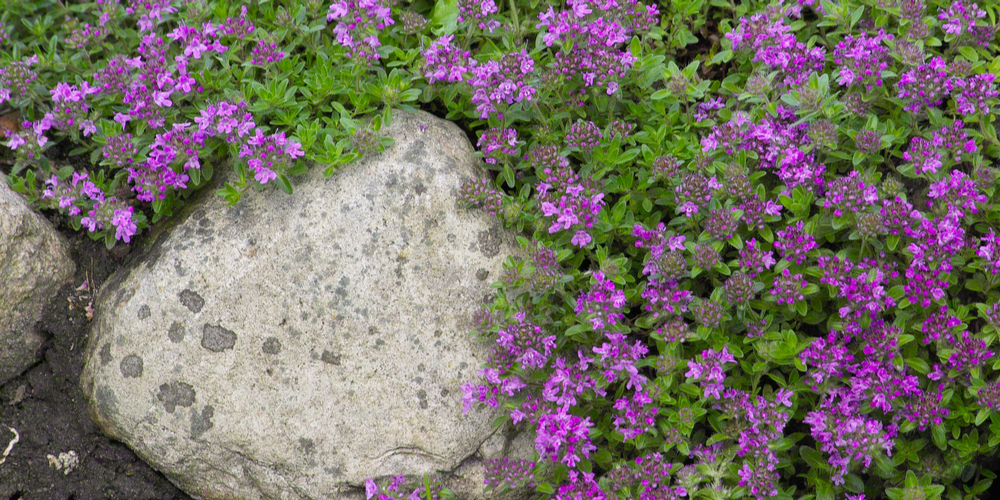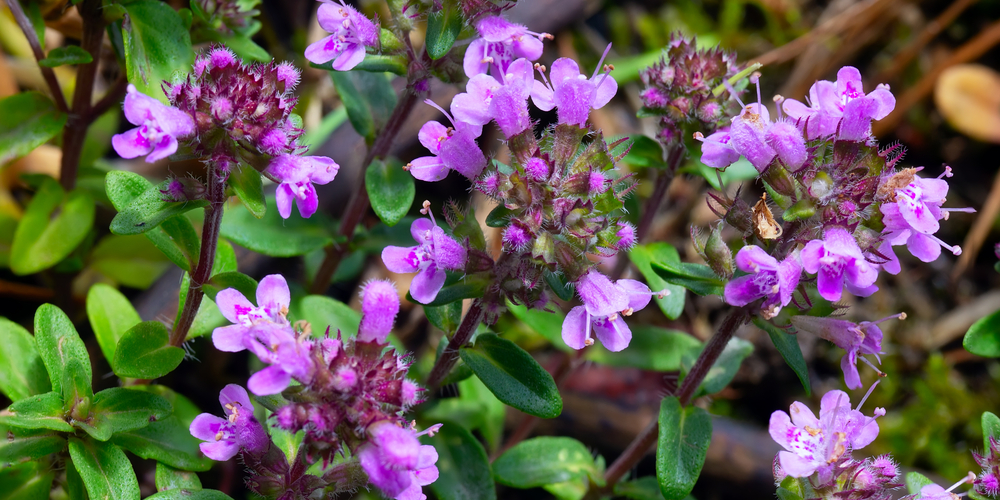As anyone who maintains a garden knows, maintaining the well-being of your garden can be a challenging adventure. So, it’s crucial to understand what you’re getting yourself into when adding new additions to your verdant sanctuary.
If you’re considering incorporating red creeping thyme into your garden but wonder if red creeping thyme is invasive, then fear not; this lovely perennial herb is not invasive. Read on for further information about this beautiful but non-edible herb and how it can add a pinch of loveliness and significance to your garden.
What Is Red Creeping Thyme?

First, it’s essential to understand what red creeping thyme is. Knowledge is power. Since the red creeping thyme is part of the Thymus serpyllum family and is related to the thyme we use in cooking, this creeping perennial herb is edible. Creeping thyme with its minty taste is common in tea.
Additionally, it’s an attractive flowering herb that will bloom stunning petite purple/red flowers in late spring and early summer and adds a superb fragrance to any garden. In addition, these picturesque blooms attract butterflies and bees, the first of which love to lay eggs in the blossoms, and the latter love to use for pollination.
Water Requirement
Moderate watering. It is ideal to water this plant once the top three inches of the soil are dry.
Sunlight Requirement
Full sun, for about 6 hours a day, is ideal for this plant; however, it can also survive with partial sunlight.
Soil Requirement
It can grow in various soils, but well-draining soil with a neutral to slightly alkaline pH is ideal for this plant.
Ideal Climate
Since this plant is a perennial, it can survive and return even after a New England winter. For example, it can withstand various temperatures as far north as southern parts of Maine and south as central parts of Florida.
Is Red Creeping Thyme Invasive?
No, red creeping thyme is not invasive. However, some people mistake it for being invasive because it is a fast-growing herb. A single planting of red creeping thyme will spread up to 24 inches, sometimes more. However, you can manage its growth by adding vibrancy and color to the border of flowerbeds, which will ensure that it thrives, or using it as ground covering since it can tolerate light foot traffic well.
How Fast Does Red Creeping Thyme Spread?
Red creeping thyme is often mistaken as an invasive plant because it grows so fast. However, typically creeping thyme takes about a year to become established, and it will start to spread in its second year. It’s important to note that the shorter the stem, the slower the spread, and vice versa; the longer the steam, the quicker it spreads.
Where Is Red Creeping Thyme Native?
Like most creeping thymes, red creeping thyme is native to parts of Eurasia. For those of you that aren’t geographers or geo enthusiasts, Eurasia is the largest continental area on Earth, compromising all of Europe and Asia.
It consists of the British Isles and the Iberian Peninsula in the west to the Japanese archipelago and the Russian Far East in the east. However, creeping thyme’s native habitat narrows down to parts of Northern Europe, Western Asia, and Northern Africa.
Main Takeaways
Red creeping thyme is not an invasive plant and will make a terrific addition to any garden. It can serve several different purposes and add color to sparse sections of a garden, as well as an alluring aroma and fragrance. Like anything, incorporating red creeping thyme into your garden will take time and patience, but if you add it to your garden, you won’t be disappointed by this resistant beauty. Creeping thyme can be grown from seed or you can purchase a young plant which will spread in time.
